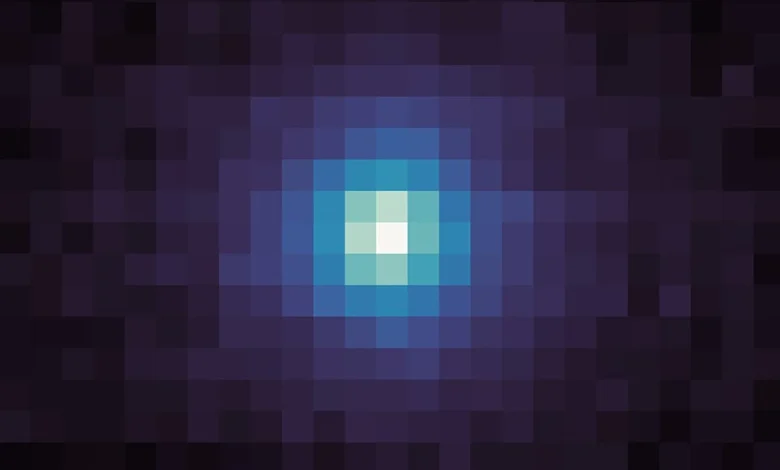NASA’s Mars spacecraft has got us a step closer to discovering what comet 3I/ATLAS is really made of

On an average Martian day, NASA’s Maven spacecraft is tasked with gathering information on the Red Planet’s atmosphere, to help scientists understand how Mars became such a hostile, barren world.
But over the course of 10 days starting 27 September 2025, MAVEN (Mars Atmosphere and Volatile Evolution) was given a brand new task.
That was observing 3I/ATLAS, the interstellar comet that has become one of the most talked-about celestial objects of the year.
Credit: NASA, ESA, D. Jewitt (UCLA); Image Processing: J. DePasquale (STScI)
The reason? Because during October, 3I/ATLAS disappeared behind the Sun from our perspective on Earth, meaning it was unobservable using ground- or even space-based telescopes.
As a result, scientists turned to some of the many spacecraft we’ve sent across the Solar System, to see if they could keep the comet in view.
Image of comet 3I/ATLAS in the Martian sky, as seen by ESA’s ExoMars Trace Gas Orbiter, 3 October 2025. The spacecraft’s camera was trained on the fast-moving comet, which is why background stars appear as streaks. Credit: ESA/TGO/CaSSIS
And they did. The European Space Agency’s Trace Gas Orbiter observed comet 3I/ATLAS, and was able to help scientists refine its trajectory.
NASA’s fleet of solar missions observed 3I/ATLAS too, capturing images of the comet as it flew close to the Sun.
MAVEN has also been used to observe 3I/ATLAS, and was able to snap images of the comet that reveal more about its hidden chemistry.
Images of comet 3I/ATLAS as seen by, left to right, NASA’s STEREO-A spacecraft, ESA/NASA SOHO spacecraft, NASA’s PUNCH spacecraft, September/October 2025. Credit: NASA/Lowell Observatory/Qicheng Zhang; NASA/Southwest Research Institute
MAVEN’s views of the interstellar comet
MAVEN captured 3I/ATLAS in two ways, with its Imaging Ultraviolet Spectrograph (IUVS) camera.
The IUVS captured multiple images of the comet in several wavelengths, then it produced high-resolution ultraviolet images that have enabled scientists to identify hydrogen coming from 3I/ATLAS.
This has helped them identify a variety of molecules and better understand the comet’s composition.
“The images MAVEN captured truly are incredible,” says Shannon Curry, MAVEN’s principal investigator and research scientist at the Laboratory for Atmospheric and Space Physics at the University of Colorado Boulder.
“The detections we are seeing are significant, and we have only scraped the surface of our analysis.”
Ultraviolet image showing the coma around comet 3I/ATLAS as seen on 9 October 2025 by NASA’s MAVEN spacecraft. Credit: NASA/Goddard/LASP/CU Boulder
Understanding 3I/ATLAS’s chemistry
A previous study using NASA’s Neil Gehrels Swift Observatory detected hydroxyl (OH) gas, a chemical fingerprint of water, at 3I/ATLAS
This latest study using MAVEN’s observations suggests an estimated upper limit of the comet’s ratio of deuterium (a heavy isotope of hydrogen) to regular hydrogen.
This can help scientists learn more about the comet’s origin and evolution.
And when 3I/ATLAS was at its closest dustance to Mars, the team used more sensitive channels of the IUVS instrument to map atoms and molecules in the comet’s coma, such as hydrogen and hydroxyl.
“There was a lot of adrenaline when we saw what we’d captured,” says MAVEN’s deputy principal investigator, Justin Deighan.
“Every measurement we make of this comet helps to open up a new understanding of interstellar objects.”
Showing where the hydrogen is
An image showing NASA’s MAVEN spacecraft’s detection of hydrogen around comet 3I/ATLAS. Credit: NASA/Goddard/LASP/CU Boulder
An image released as part of the MAVEN study of 3I/ATLAS shows hydrogen atoms surrounding the comet.
The image was captured on 28 September 2025, days before the comet’s closest approach to Mars.
It shows hydrogen emitted from three different sources: hydrogen from the comet itself, hydrogen from Mars and hydrogen flowing through our Solar System between the planets.
MAVEN was able to distinguish the comet’s hydrogen from the interplanetary and Martian hydrogen.





